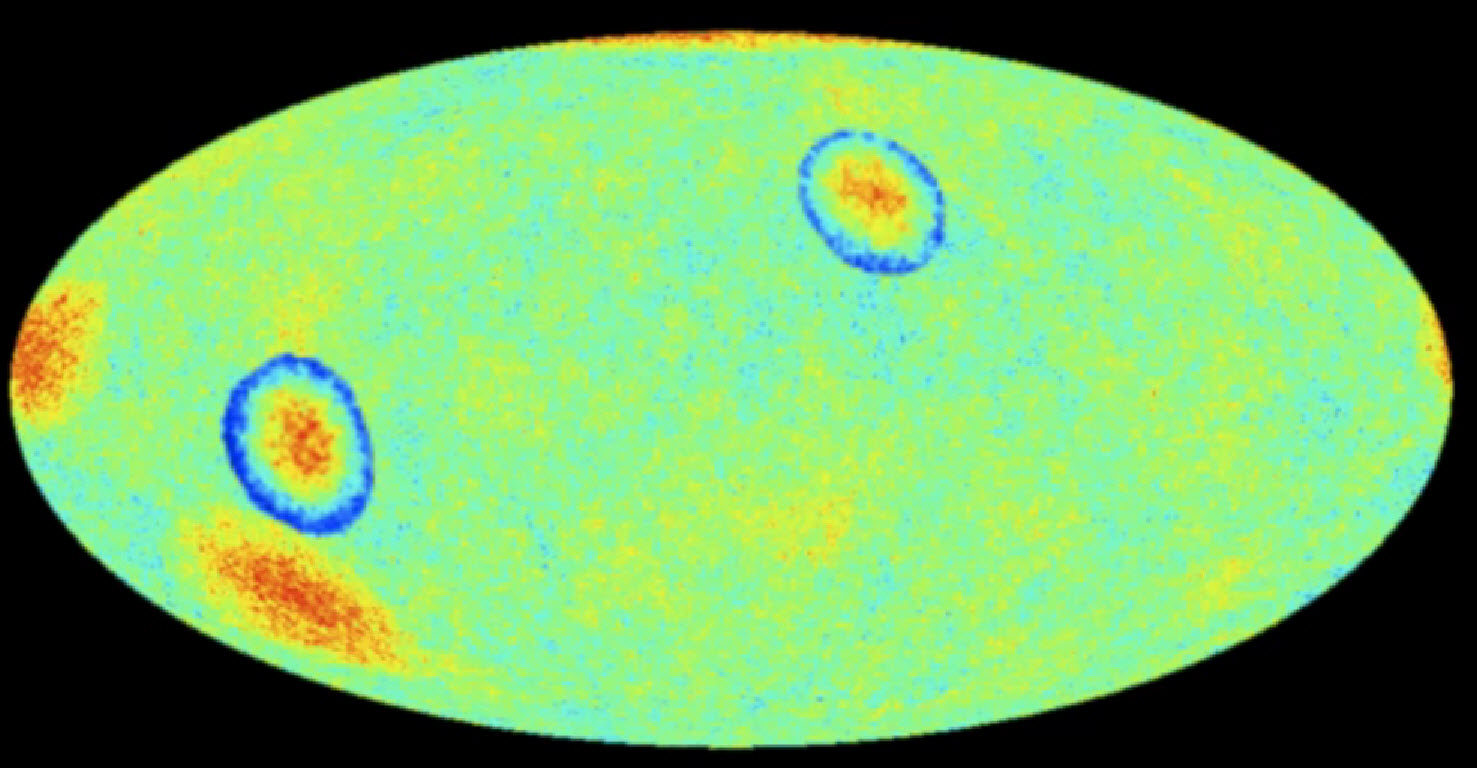Is our universe a bubble in the multiverse?
July 21, 2014

Screenshot from a video of Matthew Johnson explaining the multiverse hypothesis (credit: Perimeter Institute)
Researchers at the Perimeter Institute for Theoretical Physics are working to bring the multiverse hypothesis — we are living in one universe of many — into the realm of testable science.
Perimeter Associate Faculty member Matthew Johnson and his team are looking for clues for the existence of multiverses (a.ka. parallel universes) in the cosmic microwave background data, assumed to be left over from the Big Bang.
To do that, “we simulate the whole universe,” he says, but only on the largest scales. “We start with a multiverse that has two bubbles in it, we collide the bubbles on a computer to figure out what happens, and then we stick a virtual observer in various places and ask what that observer would see from there.”
For example, if another universe had collided with ours in the early universe, it would have left evidence in the form of a “a disk on the sky,” creating a “bruise” in the pattern, he says. That the search for such a disk has so far come up empty makes certain collision-filled models less likely.

Hypothesized disks in the cosmic microwave background (CMB) from the early universe, indicating that another bubble universe had collided with our universe (credit: Perimeter Institute)
Meanwhile, the team is at work figuring out what other kinds of evidence a bubble collision might leave behind. It’s the first time, the team writes in their paper, that anyone has produced a direct quantitative set of predictions for the observable signatures of bubble collisions. And though none of those signatures has so far been found, some of them are possible to look for.
The real significance of this work is as a proof of principle: it shows that the multiverse can be testable. In other words, if we are living in a bubble universe, we might actually be able to tell.
Perimeter Institute | Perimeter Associate Faculty member Matthew Johnson explains
the related concepts of inflation, eternal inflation, and the multiverse.
Abstract of Journal of Cosmology and Astroparticle Physics paper
The theory of eternal inflation in an inflaton potential with multiple vacua predicts that our universe is one of many bubble universes nucleating and growing inside an ever-expanding false vacuum. The collision of our bubble with another could provide an important observational signature to test this scenario. We develop and implement an algorithm for accurately computing the cosmological observables arising from bubble collisions directly from the Lagrangian of a single scalar field. We first simulate the collision spacetime by solving Einstein’s equations, starting from nucleation and ending at reheating. Taking advantage of the collision’s hyperbolic symmetry, the simulations are performed with a 1+1-dimensional fully relativistic code that uses adaptive mesh refinement. We then calculate the comoving curvature perturbation in an open Friedmann-Robertson-Walker universe, which is used to determine the temperature anisotropies of the cosmic microwave background radiation. For a fiducial Lagrangian, the anisotropies are well described by a power law in the cosine of the angular distance from the center of the collision signature. For a given form of the Lagrangian, the resulting observational predictions are inherently statistical due to stochastic elements of the bubble nucleation process. Further uncertainties arise due to our imperfect knowledge about inflationary and pre-recombination physics. We characterize observational predictions by computing the probability distributions over four phenomenological parameters which capture these intrinsic and model uncertainties. This represents the first fully-relativistic set of predictions from an ensemble of scalar field models giving rise to eternal inflation, yielding significant differences from previous non-relativistic approximations. Thus, our results provide a basis for a rigorous confrontation of these theories with cosmological data.